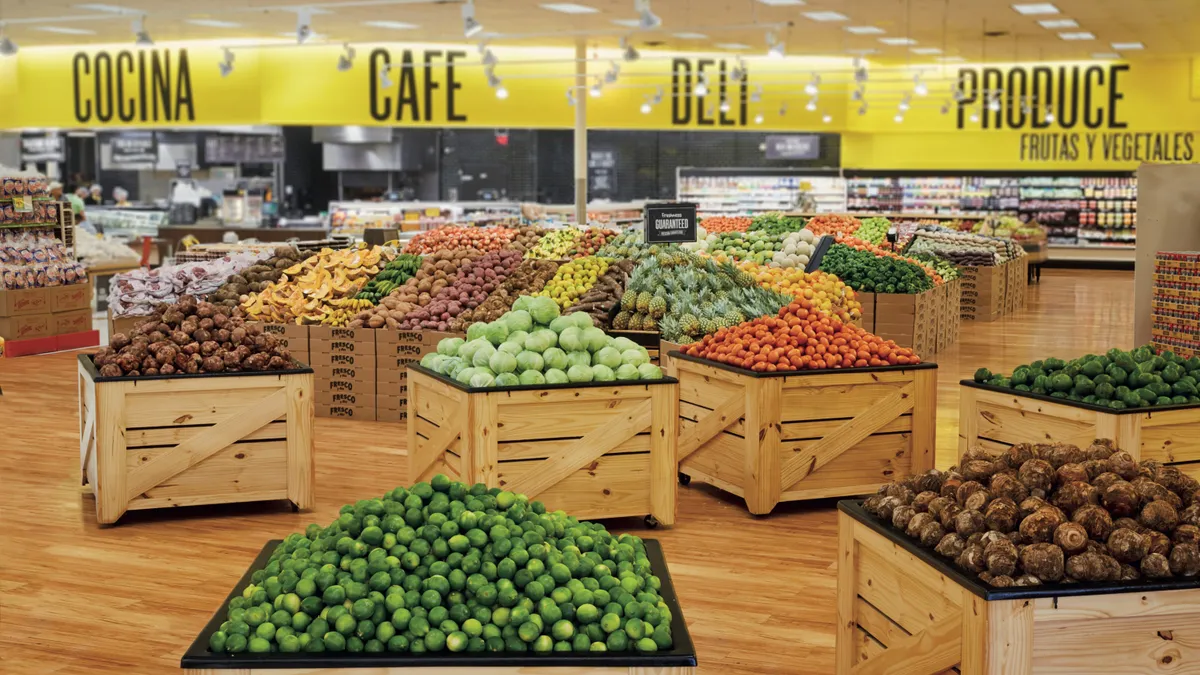Dive Brief:
- Multicultural shoppers in the U.S. enjoy grocery shopping more than White/Caucasian shoppers and tend to shop with others to make it a more social experience, according to a new report from Acosta. The report evaluates preferences among Hispanic, African American and Asian American consumers.
- About 49% of Hispanic shoppers and 46% of Asian American shoppers said they are engaged with brands that reflect their ethnic heritage, while 65% of African Americans and 59% of Asian Americans said they are passionate about their favorite brands.
- Multicultural shoppers are looking for convenience. About 76% of Hispanic shoppers reported buying prepared grocery foods in the last month, and 76% of Asian American shoppers said they ordered restaurant pickup or carry-out food in the same period.
Dive Insight:
According to a U.S. Census Bureau statistic cited in Acosta's report, the country’s multicultural population will see an increase of 98 million people by 2060, and the demographic shift will impact how grocery stores need to interact with their customers in the years to come. Among multicultural groups, a few trends already stand out: They like grocery shopping, brands matter and convenience is important.
"Understanding these unique values and preferences is vital for manufacturers and retailers to win with this emerging consumer group," said John Clevenger, senior vice president and managing director for Acosta Strategic Advisors, in a press release.
To meet the needs of this audience, which Acosta said is brand-loyal, grocers will need to have a broader selection of ethnic foods, particularly when it comes to ingredients and prepared meals. Grocers can also tap into the social nature of shopping among diverse demographics with a meaningful in-store experience.
Some established grocers have been making investments in multicultural niches. In 2016, Winn-Dixie launched its Fresco Y Mas stores in Florida to reach Hispanic customers who weren’t finding ingredients they needed in traditional stores. The banner also recently launched e-commerce, which could draw more shoppers and increased loyalty among those who are more engaged with digital tools. In 2012, H-E-B began opening stores under its Mi Tienda banner in Houston to offer a more authentic shopping experience for its Hispanic shoppers, and the superstore has continued to expand in Texas.
Small grocery businesses are also paying close attention to multicultural shoppers. In Detroit, an entrepreneur is laying the foundation to open the city's first Black-owned grocery store where the population is more than 80% African American. The 5,000-square-foot store will offer fresh, healthy food and local offerings when it is up-and-running. The Orlando Sentinel reported that Asian grocery stores in the metro area are remodeling to be larger, offer more prepared foods and to attract both younger and mainstream shoppers.
Shoppers across demographics are embracing global flavors and international cuisine, and the American palate is opening up to a variety of ethnic foods. A recent Nielsen study found that more Middle Eastern products are appearing on store shelves especially when it comes to fruit and herbs. Sales of turmeric have grown at a rate of 76% over the past five years.
Additionally, with so many retailers targeting millennials, it’s important to note that the generation is the most diverse in American history. According to the Brookings Institute, 44% of the 75 million millennials in the U.S are a minority. A one-size-fits-all approach can’t be broadly applied to all minority groups, but it is important for brands to be aware of these trends to know what will attract their grocery dollars.
Multicultural shoppers also reported using digital tools, with 44% of Hispanic shoppers reporting reading a digital grocery flyer, 38% of African American shoppers reporting using a search engine to find recipes online and 37% of Asian American shoppers saying they used a digital shopping list on their mobile device.












